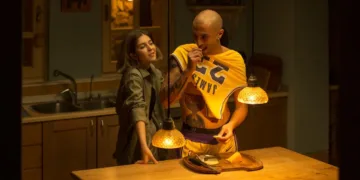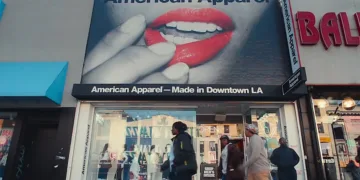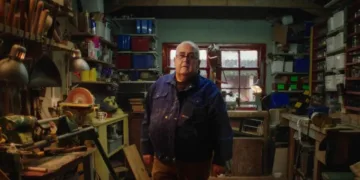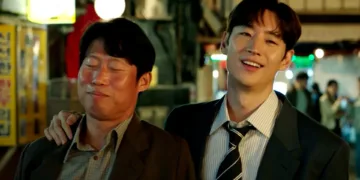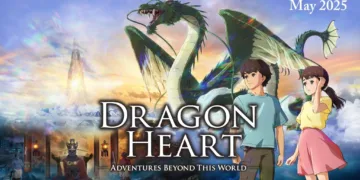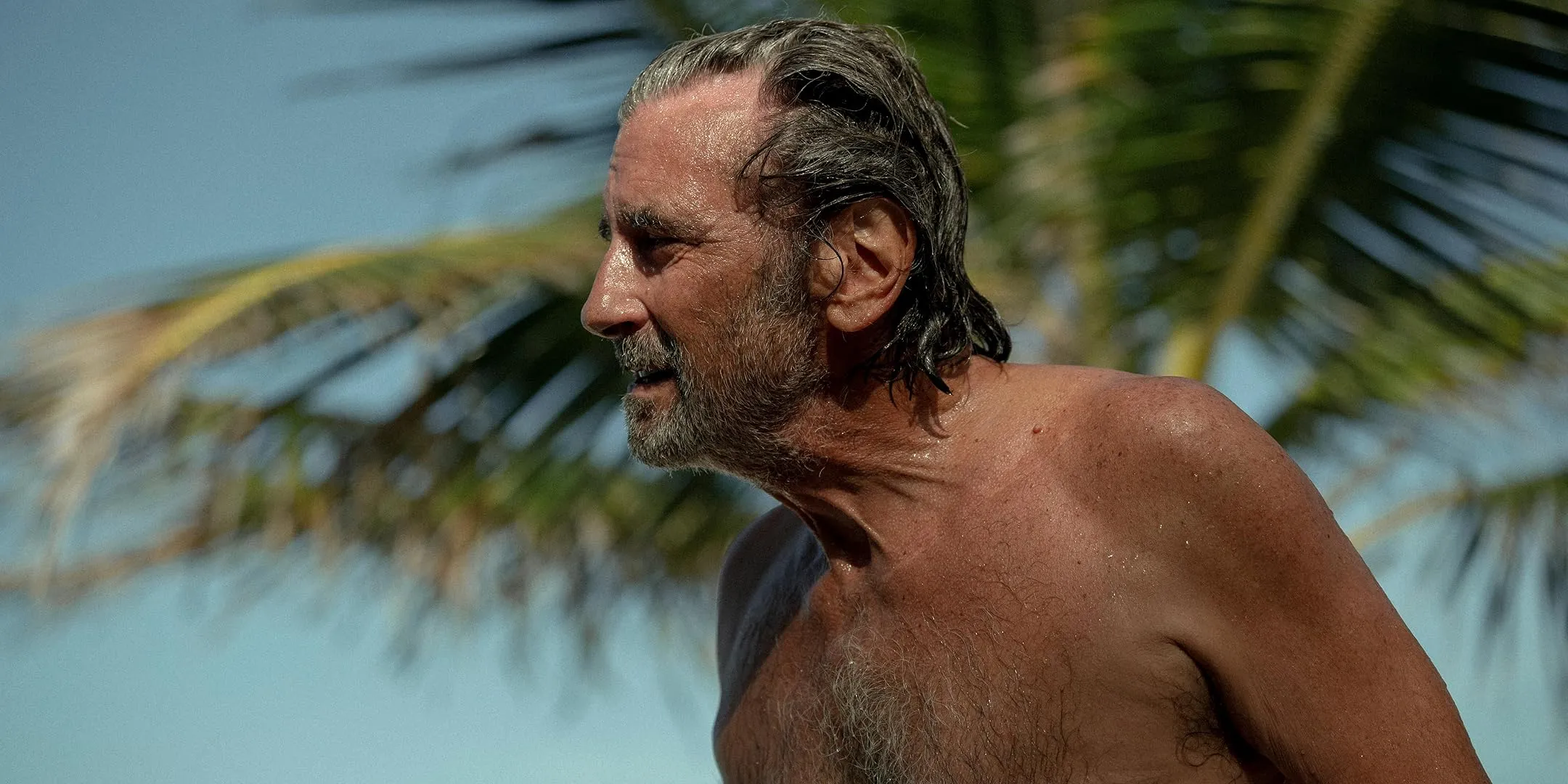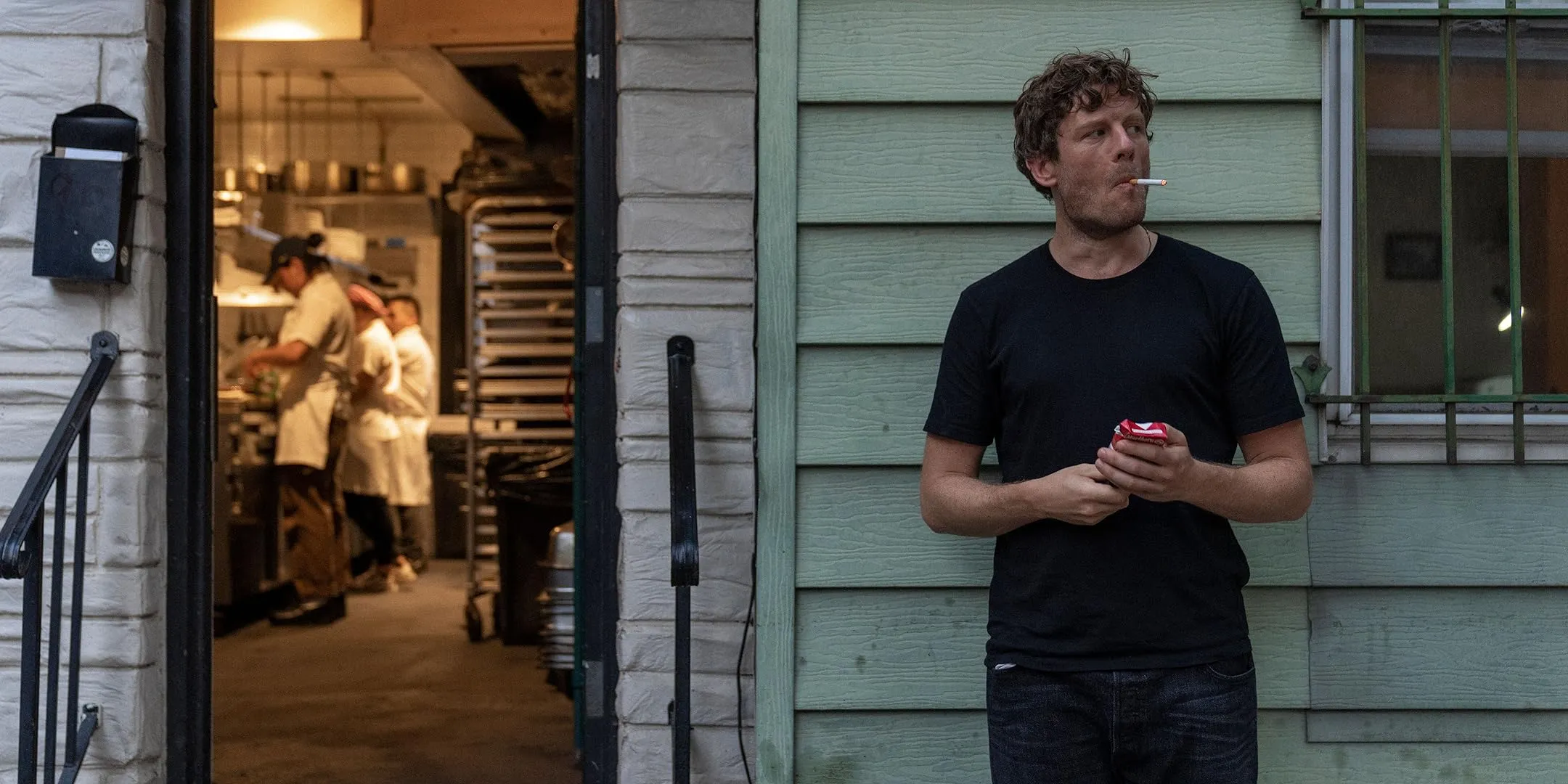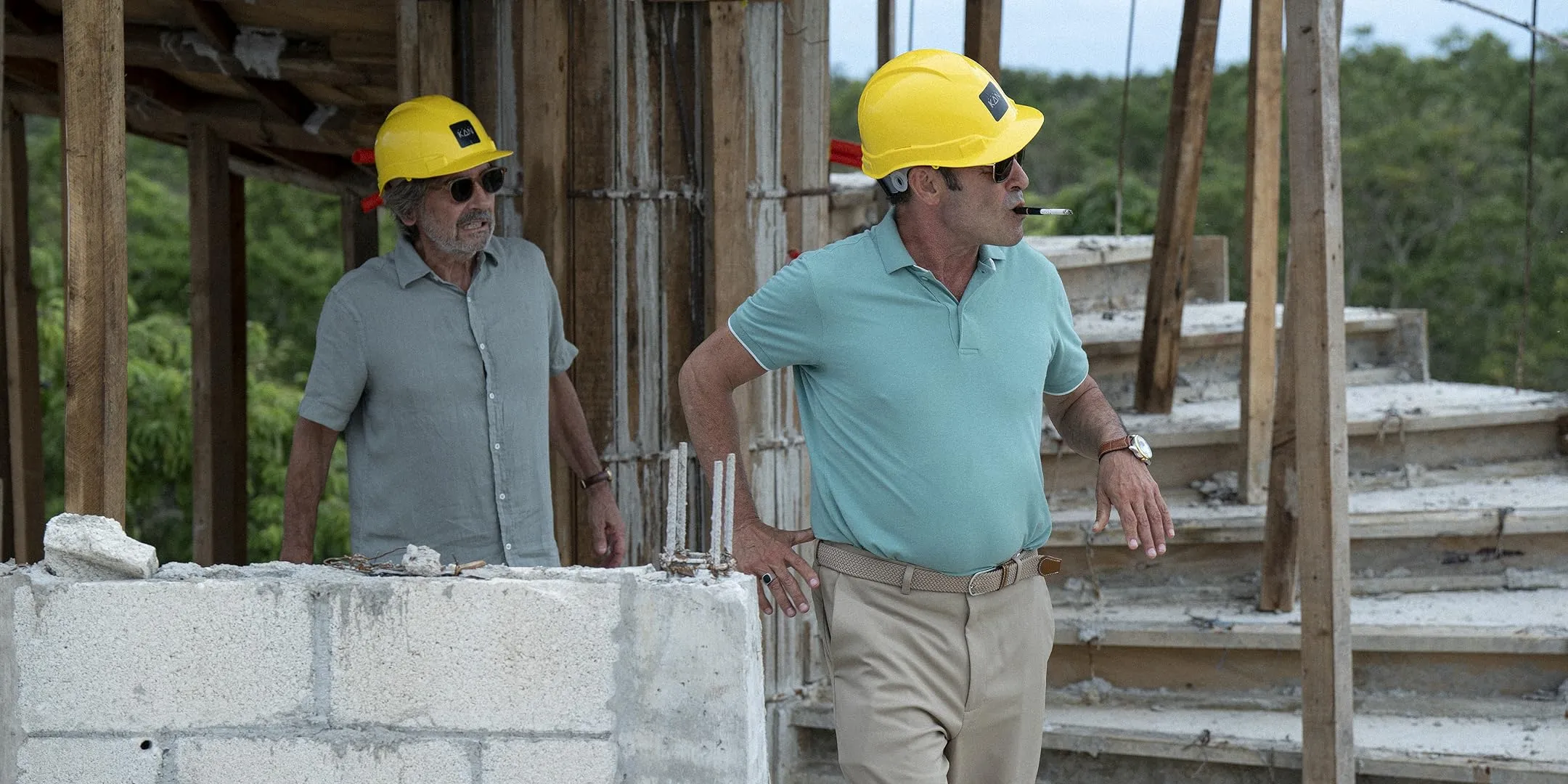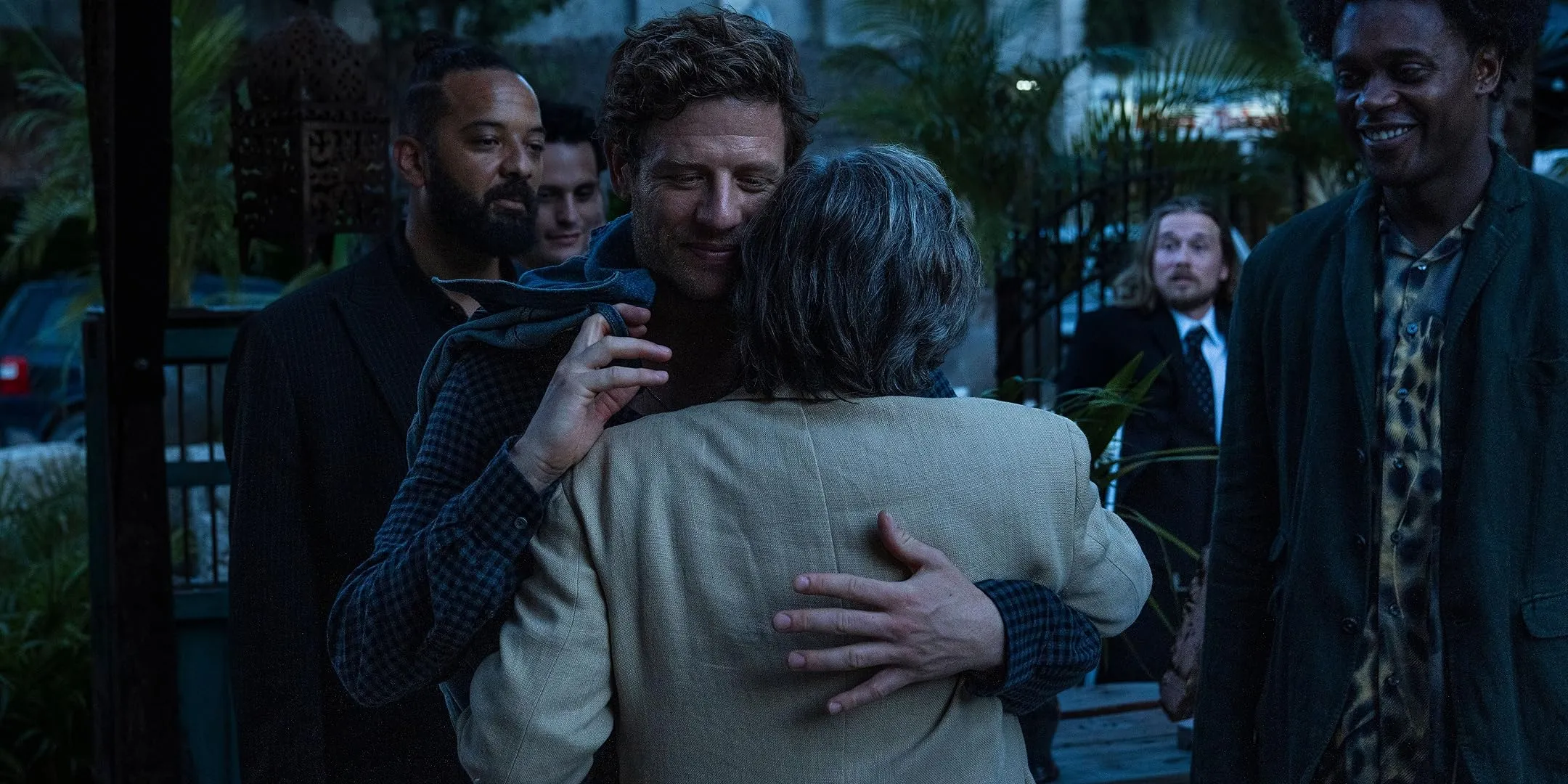The film unfolds as a quiet exploration of familial disintegration and personal metamorphosis. A father’s hesitant acceptance of an unraveling marriage collides with the inner battles of two grown sons facing their own internal disquiet. The narrative paints a portrait of lives caught between the heaviness of past commitments and the uncertainty of new beginnings, where the echo of old regrets mingles with the hope of renewal.
Set against the stark urban landscape of New York and the warm, unyielding light of a Tulum beach resort, the movie crafts an environment that mirrors the emotional duality of its characters.
In the relentless pace of the city and the languid pulse of coastal leisure, the film suggests that existence itself is a series of unpredictable moments. The tension between these two worlds reflects the internal discord within the Pearce family—a man in his midlife facing the disintegration of his once-familiar life and two sons caught in the silent disillusionment of personal crises.
Within this framework, Peter, burdened by the weight of an impending divorce, contends with the loss of a shared history, while his father Simon, and his sons Nick and Mickey, each confront their own struggles with identity and expectation.
Temporal Threads of Disquiet
In the pulsating cityscape of New York, the film opens with a moment that unsettles the familiar. Simon, a man who has spent decades bound by the quiet rituals of love, disrupts the longstanding order with a decision that fractures familial bonds—a divorce after years of shared silence and routine. This moment, heavy with unspoken sorrow, sets off tremors that ripple through each scene.
The narrative unfolds along a shifting temporal plane, marked by an interlude of six years that intensifies the characters’ inner turmoils. In this passage of time, accumulated loss, regret, and the inevitability of change emerge as silent forces. The progression is uneven and unresolved, leaving echoes that challenge the fabric of human connection.
Amid this internal unrest, Peter finds himself caught in the grip of hesitant transformation. With each measured step, he turns to escape, seeking refuge from the disintegration of his once-familiar life. His movements carry the weight of unvoiced dreams deferred, each gesture a quiet admission of resignation. At the same time, Nick wrestles with the discord between his inner longings and the impending commitments of his personal life. His struggles cast elongated shadows over preparations for a bachelor party that offers little relief from self-reflection.
A marked contrast appears between New York’s unyielding structure and the warm, expansive light of Tulum—a setting that offers a brief interlude from the relentless pressure of existence. This shift in scenery serves as an external mirror to the internal shifts of these figures, the stark differences in atmosphere heightening an undercurrent of existential disquiet that permeates every frame.
Shadows of Identity and Inheritance
In this portrayal, Peter Pearce stands at a critical juncture, bound by family responsibilities yet stirred by a yearning for self-redefinition. His character is painted with the shades of internal strife; he hesitates at the precipice of change, troubled by the impending dissolution of his marital bond. The quiet conflict within him suggests a man wrestling with the remnants of past commitments while his inner world craves an emergence into an uncertain future.
Simon, Peter’s father, appears as a relic of a bygone era whose late-life quest for affection casts a long shadow over his son’s reality. His decision to unravel decades of union sends ripples through Peter’s psyche. The disparity between their choices exposes an emotional fissure, a stark division between inherited expectations and the desire for personal renewal.
Within the same familial mosaic, Nick and Mickey articulate their own narratives of struggle. Nick, with an effortless charm that masks a profound melancholy, hides a subdued sorrow behind every carefully measured smile. His outward composure conceals a silent despair that ebbs through his daily life. Conversely, Mickey, marked by a quiet reserve and reflective introspection, seems enveloped in a solitude that mirrors a continuous internal discord. Their personal burdens and subtle challenges intricately shape the unfolding narrative, each embodying a distinct aspect of modern manhood.
Supporting figures—Maria, Eileen, and Arroyo—appear briefly yet leave a significant imprint. Their transient roles enrich the portrait by injecting moments of reflective tension, offering brief glimpses into the complex interplay of loss and longing. Each encounter, however fleeting, layers the canvas of familial identity with additional meaning. The characters’ struggles are rendered with quiet precision, their silent battles inviting contemplation of the impermanence of personal bonds and the persistent question of finding solace amid life’s inherent disarray.
The Weight of Being
The film presents a stark canvas where the crisis of midlife becomes a confrontation with one’s own fading reflection. Peter stands as a figure burdened by years of accumulated regret and the quiet yearning to reclaim a sense of self that seems lost amid the routine of daily existence.
His struggle is not merely against the inevitable progression of time but against a personal inertia that confines him to roles imposed by tradition. In his silent rebellion against an existence that no longer feels authentic, he questions the cost of commitment and the price of renewal.
A poignant dialogue unfolds between Peter and his father, Simon, whose unexpected pursuit of affection in the later years shatters long-held family expectations. This clash between the old and the new underscores a tension that runs deep—a tension that strains the fabric of familial duty and challenges the very notion of legacy. Here, the film poses a quiet inquiry into the nature of inheritance: what do we carry forward, and what must we abandon as we age?
Endings in the film are not final stops but uncertain thresholds. As marriages dissolve and long-held bonds fracture, these moments of termination echo with the possibility of rebirth. Life’s transitions are rendered in a palette of muted hues, where each farewell carries a hint of a future yet to be written—a bittersweet reminder that every loss may seed the emergence of something unexpected.
Within this somber landscape, understated flashes of humor appear like gentle sparks amid darkness. These brief, unforced instances of levity offer transient relief, punctuating the narrative with a quiet irony that acknowledges the absurdity of our condition. Their fleeting presence serves to highlight the ever-present, elusive balance between despair and the fragile hope of transformation.
Silent Artistry in Motion
Director Pritzker’s careful direction embraces a restrained tone, merging moments of subtle humor with the solemn reflections of human fragility. The film’s pacing meanders thoughtfully, each scene given room to unfold as if time itself hesitates before intruding upon the quiet sorrow that permeates the narrative. Its measured structure invites viewers to pause on fragments of life that capture the fleeting nature of our existence.
A deliberate cadence runs through the visual narrative; intimate close-ups seize transient expressions of internal despair, while wider vistas reveal an expansive emptiness that mirrors the soul’s hidden burden. The interplay of light and shadow engages in a silent dialogue, evoking a reflective stillness that shimmers beneath everyday interactions.
Parallel to this, the score—an elegiac composition of somber tones—infuses the atmosphere with a weighty, almost spectral quality, each note carrying whispers of unspoken truths. The sound design, balancing ambient murmurs with delicate reverberations, layers the emotional landscape with textures that let the characters’ inner realms subtly surface beyond mere dialogue.
Pritzker’s vision, executed with precise control and an unhurried rhythm, crafts an immersive environment where technical choices serve as meditative pauses, offering viewers a contemplative space to consider the transient nature of our mortal coil.
Spatial Dichotomies of Being
New York appears as a realm of calculated precision and intricate human rituals, its streets and interiors imbued with the gravity of unsaid sorrows. In sharp juxtaposition, Tulum radiates an effortless warmth, its sunlit coasts offering a fleeting reprieve from the harsh weight of existence.
These locales function as symbols: the metropolis, with its deliberate structure and quiet desolation, mirrors the confines of a life marked by relentless duty, while the coastal haven murmurs of ephemeral escape and the delicate hope of renewal.
Production design communicates through subtle details—a modest interior cloaked in muted shadows and a seaside vista awash in gentle, fragmented light—each setting serving as a visual verse in the narrative of inner disquiet. The careful arrangement of spaces and textures echoes a silent dialogue about the burdens of modern life and the transient nature of freedom.
Whispers of the Unspoken: Dialogue, Script, and Narrative Tone
The film’s dialogue unfolds with a fluid cadence, where each exchange quietly unveils the delicate layers of its characters. Conversations occur with an unforced simplicity, their natural flow revealing subtle nuances without resorting to overt explanation.
There is a modest interplay between humor and melancholy, as brief moments of lightness punctuate otherwise shadowed reflections on the human condition. Key lines emerge with a timing that mirrors the characters’ internal disquiet, allowing pauses that seem to echo the restless pulse of their inner worlds.
Shifts in tone appear as soft murmurs—sometimes hinting at a glimmer of hope, sometimes echoing a profound sense of loss—each alteration leaving a lingering impact. The script’s minimalistic style creates a reflective mood, inviting viewers to sense the fragile interplay between spoken words and the unvoiced sorrows that underlie them, stirring quiet questions about the transient nature of our truths.
The Review
Ex-Husbands
This film emerges as a somber meditation on aging and the quiet disintegration of legacy. It paints the modern condition with subtle strokes of humor and despair, inviting a reflective gaze at the intricate layers of human fragility. Its measured pacing and artful composition offer a space for the viewer to confront the silent weight of regret alongside the possibility of renewal.
PROS
- Thoughtful performances that capture internal conflicts
- Poetic narrative style with reflective dialogue
- Subdued humor woven into moments of melancholy
CONS
- Pacing can feel uneven in parts
- Minimalist dialogue may leave some elements ambiguous
- Certain narrative threads remain underdeveloped





















